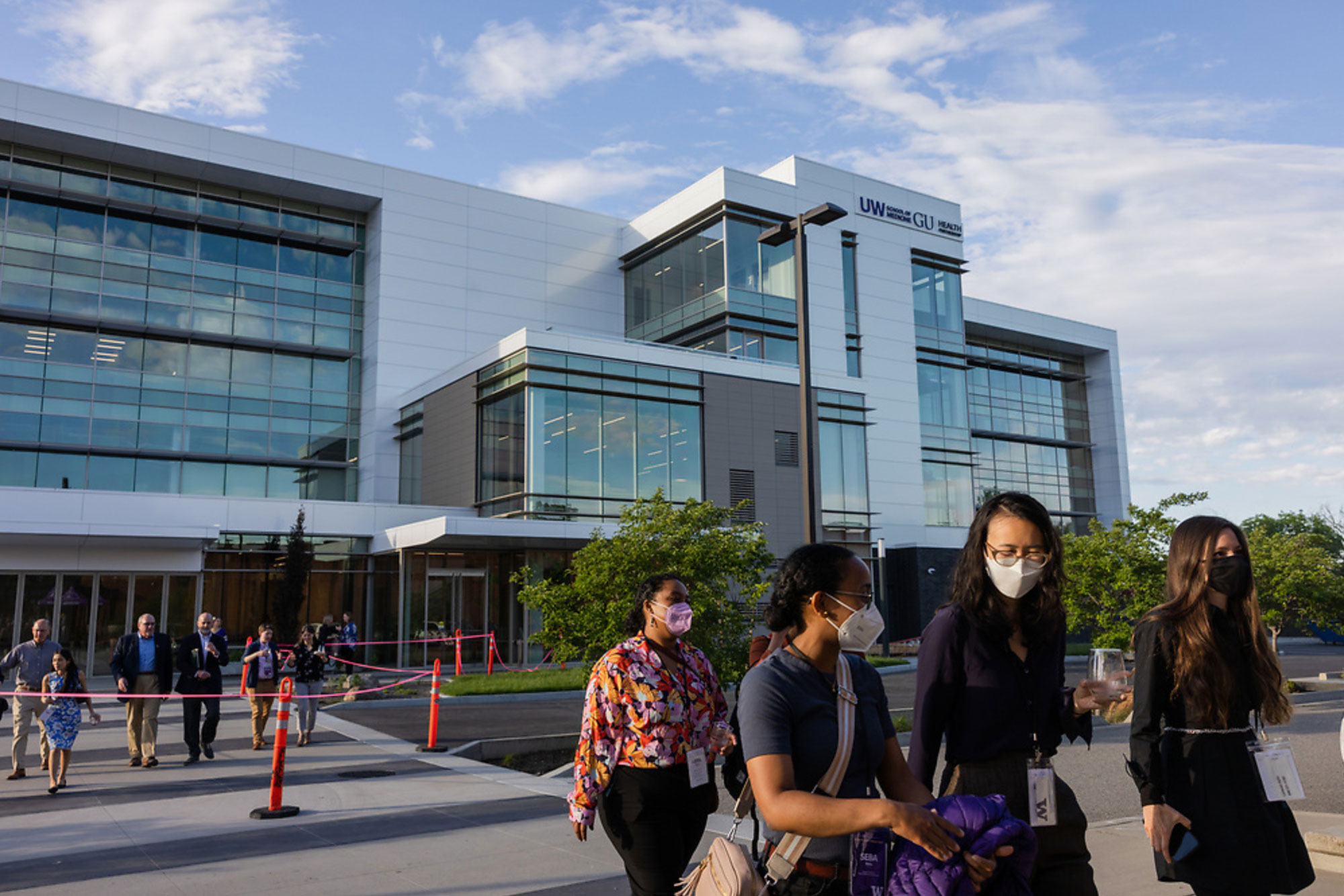
Care where it's needed Care where it's needed Care where it's needed
Is there a medical student in the house? UW School of Medicine students now occupy a state-of-the-art building in Spokane.
By UW Magazine staff | Photos by Rajah Bose | September 2022
Spokane is home to a new 86,000-square-foot center for health sciences, medical education and innovation. The first three stories of the building, which holds its grand opening with a small ceremony next week, will house the UW School of Medicine-Gonzaga University Regional Health Partnership.

“Working together, we are creating better access to health care for the patients and communities in Washington who need it most,” says Ana Mari Cauce.
The Northwest faces a growing shortage of primary care physicians, especially in rural and underserved areas. To better address this need, the UW and Gonzaga created the health partnership in 2016 to educate and retain physicians to live and work in communities throughout the region. The UW leads medical training for five states: Washington, Wyoming, Alaska, Montana and Idaho. Two of the WWAMI partner states, Wyoming and Montana, are facing the most severe doctor shortages in the country.
Situated on the southern edge of Gonzaga’s campus along the Spokane River, the privately funded, $60 million facility provides classrooms, labs, offices and study spaces for the UW School of Medicine and Gonzaga’s Department of Human Physiology. “Working together, we are creating better access to health care for the patients and communities in Washington who need it most,” says UW President Ana Mari Cauce.
The project brings to life the vision of Spokane community leaders and developers to create a life-sciences industry cluster and spur growth through innovation and collaboration between academia and industry. “In fulfilling our promise to each other, to our students, and to our community and region, we have reaffirmed our long-term commitment to broadening the array of health-related education and research endeavors, and to preparing the next generation of health care professionals here in Spokane and the Inland Northwest,” says Gonzaga President Thayne McCulloh.
WWAMI medical students at the UW School of Medicine in Spokane complete their first 18 months of medical training in Eastern Washington: basic science and clinical education, as well as rural training early in the curriculum. This year’s Spokane class of about 60 first-year medical students started their training in the new building.